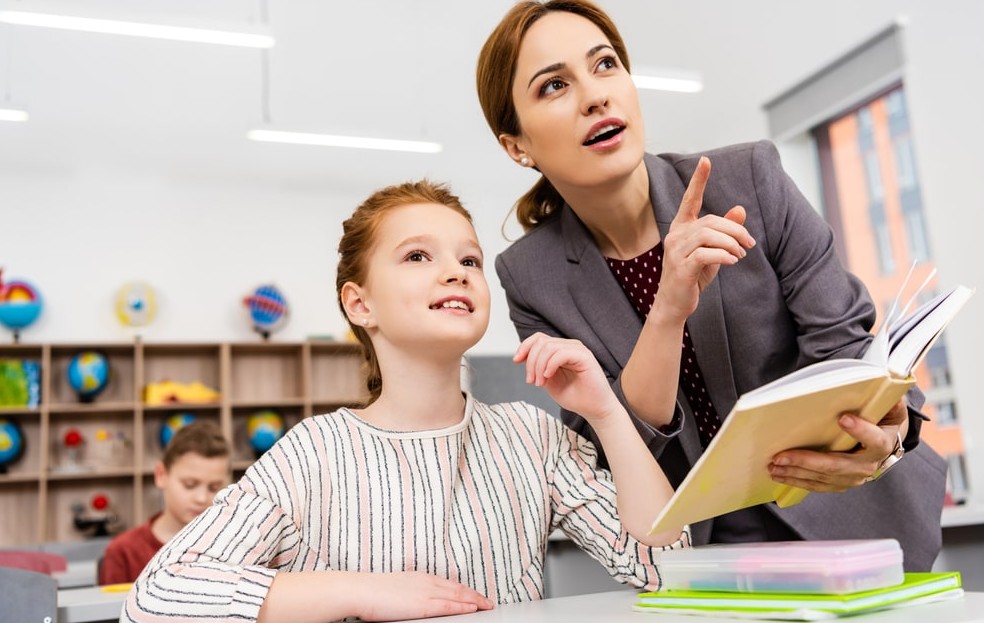Rosenshine principles provide models

Welcome once again teachers on your science of learning journey, to a riveting exploration of teaching models and their vital significance in schooling. Dip your feet into the cool educational stream that Rosenshine principles provide models being a river of brilliance that graces it. In this dynamic realm of academia, Rosenshine's principles emphasizes modeling to guide students along the pathway of learning.
Models in teaching are analogous to scaffolds in construction; they provide cognitive support, helping learners to gradually develop independence. Barak Rosenshine built his principles of instruction around these concepts. Emphasizing effective models, especially in problem-solving, is to deliver valuable cognitive support to students, ensuring learners gain, rehearse, and connect new information to what they have previously learnt.
Rosenshine principles provide models - worked examples
The first step in effective teaching models is using worked examples. It stands as an important pillar within the Rosenshine principles of modeling framework. Teachers providing models to enhance understanding of concepts, make abstract ideas more tangible, spur intellectual development, and aid students problem-solving abilities.
Worked examples offer a step-by-step walkthrough of how to approach and solve given problems, thus providing the necessary modeling support. The effectiveness of these examples lies in their transparency. They serve as excellent navigational aids, guiding the learner through the uncertain waters of new concepts and issues.
As a teacher, your role is to further enhance your delivery of instruction by narrating your thought processes as you work your way through worked out examples. "Thinking aloud" becomes a potent tool in your teaching arsenal. By verbalizing your thoughts, you're not just outlining the steps; you're providing your students with insight into your thinking journey thus enhancing your thought process towards finding solutions.
Think of your narration as a guided tour through your own cognitive landscape. You're having a real-time, spontaneous conversation with your students, explaining your reasoning while sharing specific steps and strategies. You're also demystifying the process, making the complex, simple; the abstract, concrete; the unknown, known.
The narrative process of your teacher models is focused and provides a scaffold for your students on how to analyze information, approach problems, and make connections between concepts. This act of 'thinking out loud' serves as a guideline for your students which will encourage them to gradually move towards independent application of concepts.

Organising information is the next element that shapes effective teaching models. Think of it as arranging pieces of a puzzle together. Organised and appropriately scaffolded information acts as a roadmap, guiding your students' journey towards understanding.
According to Rosenshine's principles, organised instruction requires teachers to clearly and thoroughly explain concepts, elaborate on instructions and provide a series of steps to follow. It's about deconstructing knowledge to its core components and threading them into a cohesive narrative that supports your students' understanding.
This organisation of instructions and concepts does much more than simply present complex information. It creates a structured cognitive engineering space, enabling your students to construct their reality of understanding, synchronous with the learning objectives and concepts being taught.
Rosenshine principles provide models - guided practice
The next aspect of providing good models is essentially practice guided by the classroom teacher. Rosenshine places high value on this notion, promoting what is known as guided practice. This is where you, as the teacher, monitor students' attempts at learning new material, provide prompts in an active way, and give detailed feedback when needed.
Guided practice shapes the learner's process of problem solving, contributing to skill development and a deeper understanding of new concepts. It paves the way for students to constructively engage with their learning environment, promote independent thinking, and foster academic resilience.

Building on this model of guided practice, Rosenshine principle provide model encourages supervision of independent practice. A transitional phase where the learner's understanding is nurtured from being guided to becoming autonomous and independent with some of the scaffolds removed. In your role as classroom teacher, part of your role is to cultivate a classroom mood that celebrates success and willingly embraces challenge.
Supervising independent practice is akin to teaching your students to fish independently rather than having to continually supply them with fish. By steadily stepping back and allowing your students to apply what they've learned, the knowledge has much greater opportunity to sink deeper and find lodging in long term memory. By actively stepping back you're equipping your students with the confidence, skills, and strategies to manage their own learning journey, in time.
Rosenshine principle provide models - feedback loop
One crucial element to remember – when modeling, maintain a laser-sharp focus. Stay connected to your learning objectives but also be ready to address any unexpected issues that may arise.
Effective models in the Rosenshine principles provide a cyclical feedback loop. As they apply what you've modeled, students' attempts give you valuable insight into their understanding. This continual feedback allows you to refine future instruction, customizing your teaching strategy to their needs.
At the heart of Rosenshine’s modeling lies the aim to train students to self-question – a compass to navigate their cognitive exploration. By thinking aloud your thought processes, providing worked out examples, and promoting guided practice, you too can foster a climate that encourages learners to question their own understanding of complex material.

As a teacher on the science of learning journey, do embrace the Rosenshine principles of providing models. Effective models not only shapes your own instruction but stimulates the cognitive development of your students, and improves their role as engaged learners in your classroom. Models paint a vibrant backdrop, turning your classroom into stimulating arena of knowledge and understanding.
In the grand scheme of teaching, it's also important to remember to model an environment that radiates positivity, breeds curiosity, and promotes perseverance. The culture you create in your classroom is as significant as the academic concepts you teach.
Always bear in mind that these principles and models are not a rigid curriculum, but rather a guiding light, adaptable to your teaching style and your students' learning needs. The true beauty of Rosenshine's principles lies in their flexibility and in their potential to be framed according to the classroom's pulse.
Continually refining your modeling practices, seeking feedback, and making amendments is what keeps your teaching dynamic and relevant. As you evolve with your students' needs, Rosenshine principles provide the light in the dark that act as a beacon to your instruction.
Rosenshine's principles encourage us to become a mentor rather than just a transmitter of information. They inspire us to provide a vibrant platform where students feel involved, engaged, and empowered to participate in their learning journey.
Rosenshine principles provide models - summary
Your endeavors to provide good models will shape your students as lifelong, autonomous learners, equipped with problem-solving skills and an insatiable curiosity to explore. You're not just teaching content, you're shaping minds, constructing futures, and creating independent thinkers.
As we conclude, remember this – every lesson you model, every snippet of knowledge you narrate, dramatically impacts your students. By embracing Rosenshine principles on providing models, you're not dictating knowledge but crafting a legacy of cognitive independence that empowers your students to take charge of their own learning. Welcome to the transformative journey of science of learning education!
REFERENCES:
Sherrington, T. (2019) Rosenshine Principles in Action, John Catt Independent Thinking Publication
09/2023
